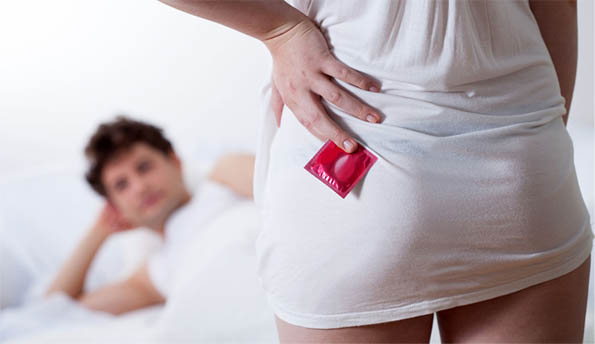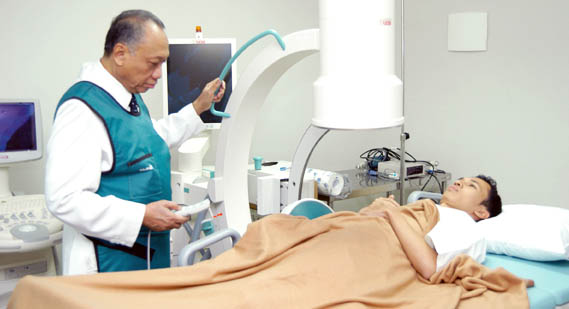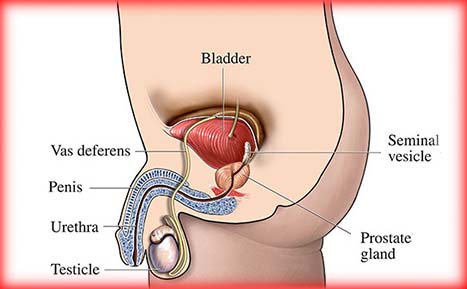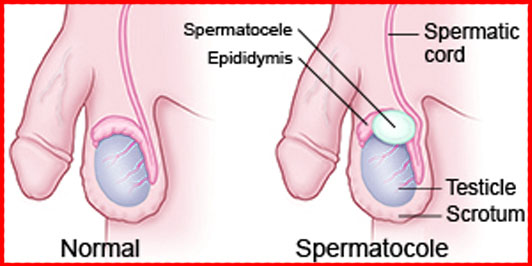The urethra is an important part of the urinary tract. While its primary job in both genders is to pass urine outside the body, this channel also has an important role in ejaculating semen from the reproductive tract of men. Most people will not have any problems with the urethra, but a few of us may experience the discomfort and dysfunction associated with urethral stricture disease. What is this and how can it be treated? The information below should help you talk with your urologist.
What happens under normal conditions?
During urination, the bladder empties through the urethra and out of the body. Urine passes through an opening called the bladder neck into a portion of the urethra surrounded by the prostate, called the prostatic urethra. The next segment of the urethra is called the membranous urethra and it contains a muscle called the external urinary sphincter. This sphincter allows a patient to voluntarily hold urine and to stop during urination. Together, the prostatic urethra and the membranous urethra make up the posterior urethra, and are approximately one to two inches long. The urine then enters the bulbar urethra, followed by the penile urethra. The penile urethra is the segment that runs along the bottom surface of the penis. The exit at the tip of the penis is called the meatus. The bulbar urethra, penile urethra and meatus make up the anterior urethra, which is nine to 10 inches long.
What is a urethral stricture?
A urethral stricture is a scar in or around the urethra, which can block the flow of urine, and is a result of inflammation, injury or infection.
Who is at risk for urethral strictures?
Urethral strictures are more common in men because their urethras are longer than those in women. Thus men’s urethras are more susceptible to disease or injury. A person is rarely born with urethral strictures.
What are some causes of urethral stricture?
Stricture disease may occur anywhere from the bladder to the tip of the penis. The common causes of stricture are trauma to the urethra and gonorrheal infection. However, in many cases, no cause can be identified. Stricture of the posterior urethra is often caused by a urethral injury associated with a pelvic bone fracture (e.g., motor vehicle or industrial accident). Patients who sustain posterior urethral injuries from pelvic fracture generally suffer a disruption of the urethra, where the urethra is cut and separated. These patients are completely unable to urinate and must have a catheter to realign the urethra. The catheter is placed through the penis up into the bladder to allow urine to drain until a repair can be performed. Trauma such as straddle injuries, direct trauma to the penis and catheterization can result in strictures of the anterior urethra. In adults, urethral strictures may occur after prostate surgery, removal of kidney stones, urinary catheterization or other instrumentation. In children, urethral strictures most often follow reconstructive surgery for congenital abnormalities of the penis and urethra, cystoscopy and urethral catheter drainage.
What are the symptoms of urethral strictures?
Some symptoms that may be an indication of urethral strictures can include:
- painful urination
- slow urine stream
- decreased urine output
- spraying of the urine stream
- blood in the urine
- abdominal pain
- urethral discharge
How are urethral strictures diagnosed?
Simply put, the urethra is like a garden hose. When there is a kink or narrowing along the hose, no matter how short or long, flow can be significantly reduced. When a stricture becomes narrow enough to decrease urine flow, the patient will develop symptoms. Frequent urination, urinary tract infections and inflammation or infections of the prostate and scrotal contents (epididymis) may occur. With long-term severe obstruction, damage to the kidneys can occur.
Evaluation of patients with urethral stricture disease includes a physical examination, urethral imaging (X-rays or ultrasound) and sometimes urethroscopy. The retrograde urethrogram is an invaluable test to evaluate and document the stricture. Combined with antegrade urethrogram, length of the stricture can be determined. The retrograde urethrogram is performed as an outpatient X-ray procedure and can indicate the number, position, length and severity of the stricture(s). This study involves insertion of contrast dye (fluid that can be seen on an X-ray) into the urethra at the tip of the penis. No needles or catheters are used. The retrograde urethrogram study allows doctors to see the entire urethra and outlines the area of narrowing at the stricture. Ultrasound is performed by placing a small, pencil-like ultrasound wand on the skin over the stricture to view it and surrounding tissue. Urethroscopy is a procedure where the doctor gently places a small, flexible, lubricated telescope into the urethra and advances it to the stricture. This study permits the doctor to see the urethra between the tip of the penis and the stricture. All of these tests can be performed in an office setting and will allow the urologist to provide treatment recommendations.
In the case of urethral trauma, once emergency treatment has been provided, the evaluation of patients with posterior urethral disruptions involves a retrograde urethrogram, and if a suprapubic catheter is present, injection of contrast dye through this tube at the same time. Contrast injected from below fills the urethra up to the injured area, and contrast injected from above fills the bladder and the urethra down to the stricture. These two films together allow the surgeon to determine the gap between the two ends in order to plan the surgical repair.
How can urethral strictures be prevented?
The most important preventive measure is to avoid injury to the urethra and pelvis. Also, if a patient is performing self-catheterization they should exercise care, to liberally instill lubricating jelly into the urethra, and to use the smallest possible catheter necessary for the shortest period of time.

Acquired strictures may be a result of inflammation caused by sexually transmitted diseases (STDs). Although gonorrhea was once the most common cause of inflammatory strictures antibiotic therapy has proven effective in reducing the number of resulting strictures. Chlamydia is now the more common cause, but strictures caused by this infection may be prevented by avoiding contact with infected individuals or by using condoms.
What are some treatment options?
Treatment options for urethral stricture disease are varied and selection depends upon the length, location and degree of scar tissue associated with the stricture. Options include enlarging the stricture by gradual stretching (dilation), cutting the stricture with a laser or knife through a telescope (urethrotomy) and surgical removal (excision) of the stricture with reconnection and reconstruction with grafts.
Dilation
This is usually performed in the urologist’s office under local anesthetic and involves stretching the stricture using progressively larger dilators called “sounds.” Alternatively, the stricture can be dilated with a special balloon on a catheter. Dilation is rarely a cure and needs to be periodically repeated. If the stricture recurs too rapidly the patient may be taught how to insert a catheter into the urethra periodically to prevent early closure.
Pain, bleeding and infection are the main problems associated with dilation procedures. Occasionally, a “false passage” or second urethral channel may be formed from traumatic passage of the “sound.”
Urethrotomy
This procedure involves use of a specially designed cystoscope that is advanced along the urethra until the stricture is encountered. A knife blade or laser operating from the end of the cystoscope is then used to cut the stricture, creating a gap in the narrowing. A catheter may be placed into the urethra to hold the cleft open for a period of time after the procedure to allow healing in the open position. The suggested length of time for leaving a catheter tube draining after stricture treatment can vary.
Urethral Stent
This procedure involves placement of a metallic stent that has the appearance of a circular chain link fence. The stent is placed into the urethra through the penis using a specially designed cystoscopic insertion tool after the urethra is widened. The stent expands within the widened stricture and prevents the urethra from closing. The lining of the urethra eventually covers the stent, which remains in place permanently. This treatment has the advantage of being “minimally invasive.” However, it is only suited to very select strictures and frequently causes significant swelling around the device. Removal of these devices is very difficult and may result in a more significant stricture.
Open surgical urethral reconstruction
Many different reconstructive procedures have been used to treat strictures, some of which require one or two operations. In all cases, the choice of repair is influenced by the characteristics of the stricture, and no single repair is appropriate for all situations. Open reconstruction of a short urethral stricture may involve surgery to remove the stricture and reconnect the two ends (anastomotic urethroplasty). When the stricture is too long and this repair is not possible, tissue can be transferred to enlarge the segment to normal (substitution procedures). Substitution repairs may need to be performed in stages in difficult circumstances.
Urethroplasty
Urethroplasty is a surgical procedure dealing with the repair of a defect or injury over the walls of the urethra. This surgery is carried out simply to fix the scar tissue blockage pertaining to the urethra known as urethral stricture. The urethra is basically a tube, which carries the urine from the bladder (via the penis) to the outside of the male’s body. An urethral stricture can be seen occurring anywhere inside the urethra. A urethral stricture can be called as the scarred or hardened area, which simply causes narrowing down the caliber of the urethra. The stricture is seen eventually reducing or obstructing the urine flow over the bladder, which is seen making it difficult to urinate. Hence the bladder should work very much harder in order to push the urine via the narrowed kind of area of the urethra. The urethroplasty surgery India has become popular among global patients for many reasons. These include the low cost urethroplasty surgery India.
Anastomotic Procedures
These are usually reserved for urethral strictures of two centimeters or less where the urethra can be reconnected after removing the stricture. This procedure involves a cut between the scrotum and rectum. This is usually performed as an outpatient procedure or with a brief hospitalization. A small, soft catheter will be left in the penis for 10 to 21 days and removed after an X-ray is performed to ensure healing of the repair.
Substitution Procedures
- Free Graft Procedures: Strictures significantly longer than two centimeters may be repaired with a Free Graft Procedure to enlarge the urethra. The graft may be skin (usually removed from the shaft of the penis) or buccal mucosa removed from inside the cheek. Brief hospitalization and catheterization for two or three weeks are usually required after this procedure.
- Skin Flap Procedures: When a long stricture is associated with severe scarring and a free graft would not survive, flaps of skin can be rotated from the penis to ensure survival of the newly created urethra. These procedures are complex and require a surgeon experienced in plastic surgery techniques. Brief hospitalization and catheterization for two or three weeks are usually required after this procedure.
- Staged Procedure: When sufficient local tissue is not available for a skin flap procedure and local tissue factors are not suitable for a free graft, a staged procedure may be required. The first stage in a staged procedure focuses on opening the underside of the urethra to expose the complete length of the stricture. A graft is secured to the edges of the opened urethra and allowed to heal and mature over a period of three months to a year. During that time, patients urinate through a new opening behind the stricture, which in some cases will require the patient to sit down to urinate. The second stage is performed several months after the graft around the urethra has healed and is soft and flexible. At this stage the graft is formed into a tube and the urethra is returned to normal. A small, soft catheter will be left in the penis for 10 to 21 days.
What are the possibilities of recurrence?
Because urethral strictures can recur at any time after surgery, patients should be monitored by a urologist. After removal of the catheter, followup of the repair should be performed intermittently with physical examination and X-ray studies being performed as necessary. Sometimes, the doctor will perform urethroscopy to evaluate the repaired area. Some patients will have recurrence of stricture at the site of the prior repair. These are sometimes mild and require no intervention, but if they cause obstruction they can be treated with urethrotomy or dilation. A repeat open surgical repair may be needed for significant recurrent strictures.

Frequently Asked Questions:
Can urethral strictures be treated with medicine?
No.
What can occur if no treatment is taken?
The patient would have to continue to tolerate problems with urination. Urinary and/or testicular infections and stones can develop. Also, there is a risk that urinary retention may occur which can cause the bladder to enlarge and also lead to kidney problems.
Is there a risk of infecting others with urethral strictures?
Urethral strictures are not contagious but the underlying cause, like an sexually transmitted diseases (STDs), may be contagious.







Excellent! And if you want to include in your next blog (about why nurses should use twitter) my comment in response to your NHS Leadership blog last week, feel free!
Reading your site is pure pleasure for me, it deserves to go viral, you need
some initial traffic only. If you want to know how
to get it search for
I see your site needs some unique & fresh articles.
Writing manually is time consuming, but there is tool for this task.
Just search for; Digitalpoilo’s tools